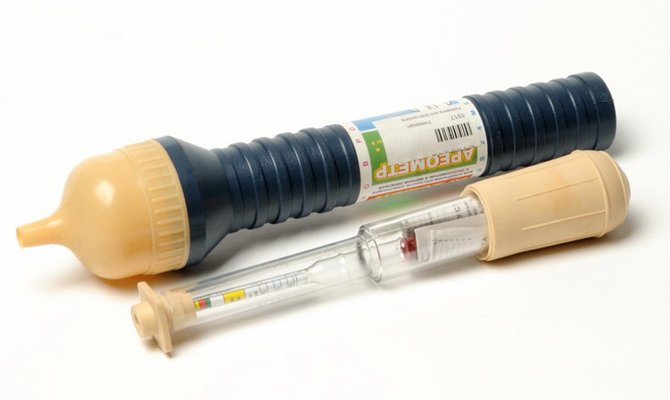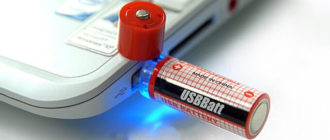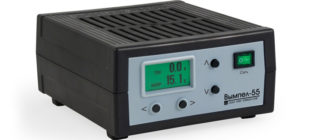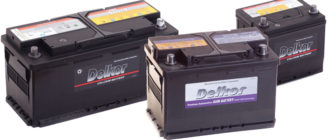Analysis of the electrolyte from the battery and measuring its density helps the car owner to judge his chemical condition. The density of the acid-containing liquid inside the battery jars depends on many factors, so it is important to be able to correctly determine the value of this parameter depending on the operating conditions of the car.
Content
- What is electrolyte density?
- How can I measure the density of the electrolyte
- Why electrolyte density may rise or fall
- What is the electrolyte density in the battery should be
- How to check battery density
- How to measure density in a maintenance free battery
- How to increase the density in the battery
- How to lower battery density
What is electrolyte density?
The density of any physical body or fluid is considered as the ratio of the mass of a substance to the volume occupied. This parameter for liquid poured into cans of a lead battery is expressed in grams per cubic centimeter.
It is not possible to visually determine the density of a substance; therefore, a special device is used to measure this parameter.
How can I measure the density of the electrolyte
Electrolyte concentration can be measured using a 10 cm3 medical syringe and accurate digital scales. The work is performed as follows:
- An empty syringe without a needle is placed on the scale and the readings of the measuring device are recorded in a notebook.
- A thin rubber tube is put on the syringe, which is lowered into one of the battery cans.
- Exactly 10 ml of acid-containing liquid is drawn into the syringe.
- A syringe, without a rubber tube, is placed on the scale and the measurement result is recorded again.
- Simple arithmetic calculations are performed:
- The mass of an empty medical device is subtracted from the mass of the syringe with electrolyte.
- The resulting value is divided by 10.
The result is an accurate density value in one bank. Thus, you need to measure this figure in all banks.
Each time, to carry out a measurement in this way is disadvantageous in terms of both the time spent and the convenience of the procedure. It is much more convenient and easier to measure the density of an acid-containing battery fluid using a hydrometer.
It consists of a special flask with a float inside. The internal part of the float has a lead load; therefore, when pumping into a liquid tank, this part is installed strictly in an upright position. On the surface of the float there is a graduated scale by which you can find out the exact value of the density of the battery electrolyte.
Why electrolyte density may rise or fall
A change in electrolyte concentration can occur for the following reasons:
- When the battery charge level changes (direct correlation).
- With leaking battery housing. If there are cracks in it or plugs are poorly screwed, then the liquid will leave and when adding distilled water, the density will decrease.
- The addition of electrolyte instead of distilled water, with the evaporation of the liquid in the summer (increase in density).
- Improperly prepared electrolyte. Most often, this situation can occur with the independent addition of acid to water.
- Intensive evaporation of water from cans in the summer.
As a rule, it is not difficult to determine the cause of the change in electrolyte concentration at home, but in order to correctly determine the magnitude of such a deviation, it is necessary to know what value is the reference.
What is the electrolyte density in the battery should be
Specifications for electrolyte density can vary significantly for acid batteries operating in different climates.
What should be the density of the electrolyte in winter
The need to maintain the concentration of sulfuric acid in the electrolyte at a higher level is due to the danger of liquid freezing at low air temperatures. A fully charged battery should have a mixture density of 1.27 - 1.28 g / cm3. Then it easily tolerates frosts to minus 70 degrees.
When the density drops to 1.20 g / cm3, the liquid is guaranteed to turn into ice already at a temperature of minus 30 degrees. As a result of crystallization, the liquid increases significantly in volume, therefore, when operating the machine in the winter, it is necessary to carefully ensure that the battery is fully charged.
Failure to do so will lead to the destruction of the internal plates of the device, which will lead to complete inoperability of the battery.
| Density electrolyte (g / cm3) | Power charge (%) | Freezing electrolyte (C) |
|---|---|---|
| 1,27 | 100 | -60 |
| 1,26 | 94 | -55 |
| 1,25 | 87,5 | -50 |
| 1,24 | 81 | -46 |
| 1,23 | 75 | -42 |
| 1,22 | 69 | -37 |
| 1,21 | 62,5 | -32 |
| 1,2 | 56 | -27 |
| 1,19 | 50 | -24 |
| 1,18 | 44 | -18 |
| 1,17 | 37,5 | -16 |
| 1,16 | 31 | -14 |
| 1,15 | 25 | -13 |
| 1,14 | 19 | -11 |
| 1,13 | 12,56 | -9 |
| 1,12 | 6 | -8 |
| 1,11 | 0,0 | -7 |
What should be the density of the electrolyte in summer
In summer, the probability of ice formation inside the battery cans is eliminated, but in serviced batteries the density can increase arbitrarily due to the evaporation of water.
The operation of batteries with a high concentration of electrolyte leads to a significant reduction in the operational life of the battery due to the more aggressive effect of acid-containing liquid on the separators.
To avoid such negative consequences, in serviced models, it is necessary to regularly monitor the electrolyte level in the summer period and, if necessary, dilute the mixture with distilled water.
How to check battery density
If the density of the electrolyte must be measured regularly, then you can not do without a hydrometer. The measurement procedure is carried out as follows:
- Unscrew the battery plugs.
- A narrow portion is introduced into the jar.
- The pear at the top of the appliance is compressed. Then it is necessary to release the rubber upper part so that the resulting negative pressure helps to fill the reservoir of the measuring device with an acid-containing liquid.
The electrolyte concentration is determined by its level on the graduated scale of the float. This simple method is used to measure in each bank of the battery.
How to measure density in a maintenance free battery
Maintenance-free batteries do not have lockable process openings in their design. This means that the manufacturer did not provide for the possibility of independent measurement of the density of the electrolyte during the entire battery life.
For craftsmen, this design feature maintenance free battery is not an insurmountable obstacle to improving the condition of the device, in the operation of which significant deviations from the norm are observed.
They turn a maintenance-free battery model into a serviceable one with a drill, which makes significant holes in the middle of each can.
A thread is cut into the holes with a tap, and a plastic rod of a suitable diameter is used to make the cork, on which a thread of a certain diameter and pitch is made using a die.
The resulting plastic pin is cut into 6 segments 3-4 cm long. Home-made plugs are screwed into the holes made earlier and then the battery is operated as a maintenance one.
There is another popular method. On the edge, in the lid, 6 small holes are drilled through which it will be possible to get full access to the liquid in each battery bank.
By measuring the electrolyte in this way, the tightness of the battery can be restored with silicone sealant. In order to prevent the substance from getting inside the battery during sealing, it is recommended that you try to straighten a part of the plastic that was pressed through during the manufacture of the hole using a homemade wire hook.
Attention! If the case is mechanically damaged, the battery flies with a guarantee, and if an error is made, it may fail. Debris falling into cans can also reduce battery life.
How to increase the density in the battery
The density of the electrolyte decreases, usually when distilled water is added to a battery having an unpressurized case. In this case, a different concentration in banks is usually observed.
If the density in the battery cannot be equalized in all banks to an acceptable value by the charger, then part of the acid-containing liquid is replaced with fresh factory electrolyte. The correction of the density of the electrolyte is performed in the following sequence:
- With the help of a pear, the maximum possible amount of electrolyte is removed from the problem can.
- Fresh acid-containing mixture is poured into the jar.
If as a result of such actions in banks there is no sufficient increase in density, then the procedure should be repeated.
How to lower battery density
The operation of a battery with an increased density of electrolyte can adversely affect its performance, therefore, if there is an electrolyte in the bank, the concentration of which is higher than 1.28, a procedure is carried out to reduce the concentration of sulfuric acid.
The process of lowering the density is carried out in the same way as when performing the procedure for increasing the concentration of the solution, but instead of the electrolyte, distilled water is added to the battery. That is, at first, part of the electrolyte is removed from the problematic can, and then the volume is filled with chemically pure water.
Still have questions about electrolyte density or have something to add? Then write to us about it in the comments, this will make the material more useful, complete and accurate.











